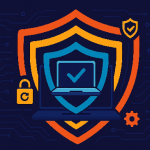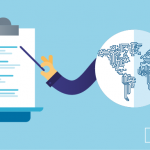
The world of Data Loss Prevention (DLP) has changed dramatically in recent years. Traditional network-based approaches that once protected data flowing through corporate environments are no longer sufficient in today’s remote-first, cloud-heavy world. If your organization is still relying on Network DLP as the cornerstone of your data protection strategy, it may be time to rethink your approach.
What Is Network DLP?
Network DLP monitors data in motion—information moving through the organization’s network. Typically deployed as a gateway appliance or sensor, it inspects network traffic across all ports and protocols, flagging or blocking sensitive data transfers that violate policy.
Network DLP was a staple of on-premise security when employees were tethered to office networks and traffic was centralized.
What Is Endpoint DLP?
Endpoint DLP focuses on data at the endpoints—laptops, desktops, or any user device. It monitors user activity and data transfers at the source, controlling how data is copied, moved, uploaded, or shared via applications, external devices, or the cloud.
With remote work becoming the norm and data residing everywhere—cloud apps, file servers, and local drives—Endpoint DLP has become indispensable.
Pros and Cons: Network DLP vs. Endpoint DLP
| Feature | Network DLP | Endpoint DLP |
| Visibility | Sees data leaving the network (if a network exists) | Tracks user actions on the device itself |
| Deployment | Hardware-based; depends on traffic passing through a central location | Software-based; runs directly on the device |
| Cloud/App Coverage | Limited visibility into cloud tools and off-network use | Full coverage—even offline |
| Granularity | Inspects packets and traffic | Understands user behavior and context |
| Remote Work Fit | Weak—only works on corporate networks | Strong—follows the user/device wherever they are |
Work Has Left the Building—So Should Your DLP Strategy
Before COVID-19, Network DLP worked well—users were inside the network perimeter, and all traffic flowed through company-controlled gateways. Fast forward to today, and things have changed:
- Work-from-home is permanent for many organizations.
- Cloud-first architectures dominate.
- The corporate network is fragmented, if it exists at all.
In this context, Network DLP has become blind. Without a central network to monitor, it cannot see data moving from unmanaged devices or cloud platforms.
Limitations of Both Approaches
Network DLP Limitations:
- Relies on visibility into a network that may no longer exist.
- Doesn’t cover off-network activity or cloud-native apps.
Endpoint DLP Limitations:
- Monitors data transfers only for a predefined list of supported applications.
- If a user installs a new browser or messaging app not supported by the DLP, data exfiltration can occur unnoticed.
- Blocking app installations entirely by removing admin rights cripples productivity for many users.
The Smart Fix: Layered Security with Least Privilege + Integrity Monitoring
To close these gaps without sacrificing user productivity, smart organizations are combining Endpoint DLP with:
Endpoint Privilege Manager
- Allows users to elevate privileges when necessary.
- Permits installation only of pre-approved applications.
- Blocks unauthorized (and unsupported) apps that bypass DLP visibility.
Netwrix Change Tracker
Establishes a baseline of approved software and system configurations.
- Notifies IT/security when any unauthorized changes or app installations occur.
- Detects workarounds or exploitation attempts that bypass normal controls.
Conclusion: Endpoint DLP Is No Longer Optional – it’s foundational
As the traditional corporate network fades and work becomes more decentralized, Network DLP loses its effectiveness. Endpoint DLP is now the cornerstone of any modern data protection strategy, providing visibility and control where data actually resides—on the device.
Still, Endpoint DLP needs support. A user with local administrative rights might install an application that is not compliant with the defined Data Loss Prevention (DLP) policies, potentially using it as a backdoor to exfiltrate sensitive data. With Endpoint Privilege Management, users are restricted to installing only pre-approved applications that align with the endpoint DLP policies and overall strategy. That’s why combining Endpoint DLP with tools like Endpoint Privilege Manager and Netwrix Change Tracker is critical.
Get visibility into what data is leaving endpoints over every single application that is installed on the endpoint to reduce the data exfiltration surface to a minimum. Combine Endpoint DLP with Endpoint Privilege Manager to allow users to run as standard users while still elevating privileges for pre-approved apps only—ensuring unsupported or risky software doesn’t slip through the cracks. Take it a step further with Netwrix Change Tracker, which monitors for any changes to endpoint configurations and applications, immediately alerting security teams when deviations from the baseline occur.
This layered, adaptive approach is the best way to keep data secure without slowing down the business.
Download our free ebook on
Data Loss Prevention Best Practices
Helping IT Managers, IT Administrators and data security staff understand the concept and purpose of DLP and how to easily implement it.
















